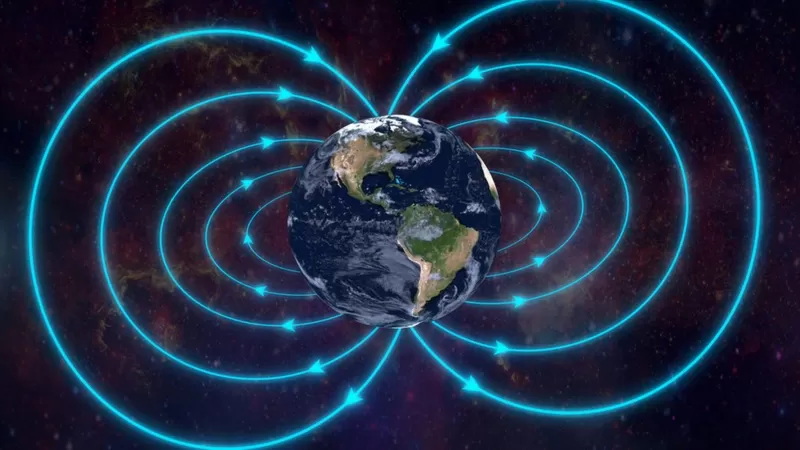Earth Day 2023: 10 amazing facts about our planet

World Earth Day is celebrated every year on April 22. The date chosen by the United Nations to honor our planet recalls the events of April 22, 1970, when 20 million people took to the streets of major cities in the United States to protest environmental damage caused by human activity.
This Earth Day, let's take a look at some fascinating facts about the planet we call home.
The Earth is not a perfect sphere1.
Our planet is usually depicted as a perfect sphere, but this is not its exact shape. The Earth is flat at the poles, so its shape is more accurately called an "oblate spheroid".
As in the case of other planets, the effect of gravity and centrifugal force resulting from rotation on its axis generates polar flattening and equatorial expansion. Thus, the Earth's diameter at the equator is about 43 km greater than the diameter from one pole to the other.
More than 70% of the Earth is covered by water2.

Water covers nearly three quarters of the planet's surface
On Earth, water exists in solid, liquid, and gaseous states.
Moreover, they cover nearly three quarters of the Earth's surface in the form of glaciers, swamps, lakes, rivers, seas and oceans.
About 97% of all water on the planet is salty and is found in the oceans.
Space starts from about 100 km above the Earth3.
The boundary between the atmosphere and space is known as the Kerman Line, which is 100 kilometers above sea level.
About 75% of the atmosphere's mass is found in the first 11 km of altitude above sea level.
The earth has an iron core4.

Earth's core is mainly composed of iron
Earth is the densest planet and the fifth largest in the solar system.
It is believed that the innermost part of the Earth is a solid ball with a radius of about 1,200 km.
It consists mainly of iron, which makes up an estimated 85% of its weight, and nickel, which makes up about 10% of the core.
Earth is the only planet known to have life5.
Earth is the only astronomical body in the universe on which we have been able to verify the presence of life.
There are currently about 1.2 million animal species cataloged, although this is believed to be only a small percentage of the total fauna on Earth.
In 2011, scientists estimated that the natural world contains approximately 8.7 million species.
Earth formed about 4.5 billion years ago, and the Earth's physical characteristics, geological history, and orbit have allowed life to exist for millions of years.
Gravity is not equal everywhere on Earth6.

There are differences in the strength of Earth's gravitational field
Since our planet is not a truly perfect sphere, and furthermore, the mass is not distributed in a perfectly homogeneous manner, there are differences in the strength of the gravitational field.
So, for example, as we move from the equator toward the poles, the gravitational field strength gradually increases, although the difference is imperceptible to humans.
Earth is a planet of contrasts7.
Our planet is full of stark contrasts. Its diversity of geography and climate means that almost every region has its own characteristics.
There are many places candidates to be considered the hottest on Earth, but the place that has the highest temperature ever recorded is Death Valley in the United States of America, where the thermometer recorded on July 10, 1913, 56.7 degrees Celsius.
On the other hand, there is Antarctica. At the Vostok station on July 31, 1983, the measuring instruments reached a record of minus 89.2 degrees Celsius.
The largest living structure on Earth8.

The Great Barrier Reef is home to thousands of different species
The Great Barrier Reef, located off the coast of Australia, is the largest single living structure on the planet, so much so that it is the only one visible from space.
It extends for more than two thousand kilometers and is home to thousands of marine species.
In 1981, it was declared a World Heritage Site by UNESCO.
Earth is the only planet in the solar system with active plate 9. tectonics
The movement of these plates means that the surface of our planet is constantly changing.
Plates are also responsible for mountain formation, seismic activity, and volcanism.
The plate cycle also plays a key role in regulating the Earth's temperature, which contributes to the recycling of warming gases such as carbon dioxide, through the permanent replenishment of the ocean floor.
The earth has a protective shield10.

Earth's magnetic field acts as a protective shield
Earth's magnetic field acts as a shield against the constant bombardment of high-energy particles from the sun.
This field extends from Earth's inner core to the boundary where it meets the solar wind.
Among other things, the magnetic field also helps some animals find their way (it also helps us if we use a compass).
Source : websites

